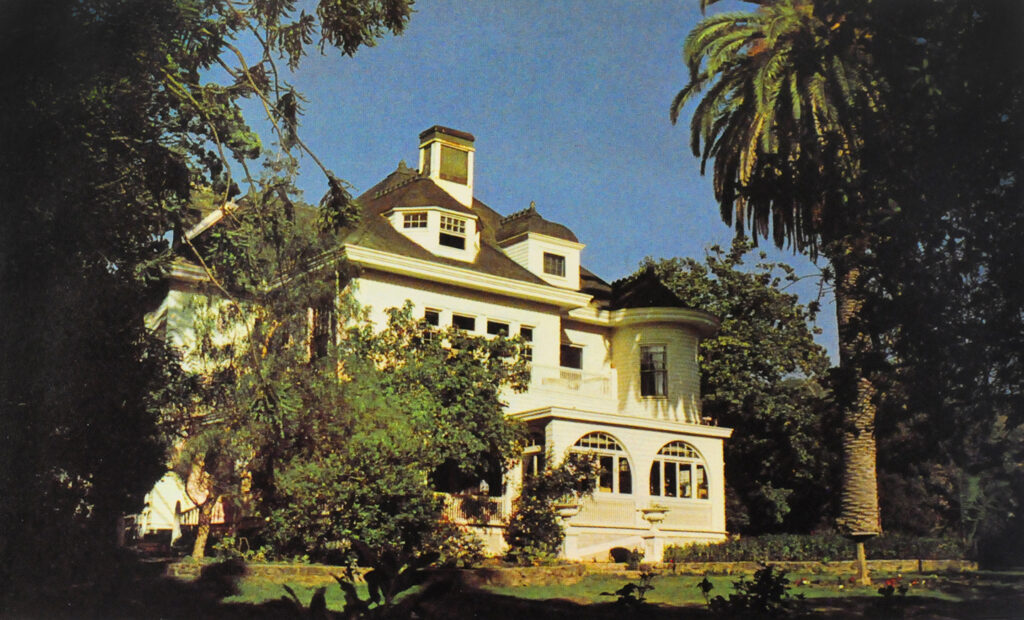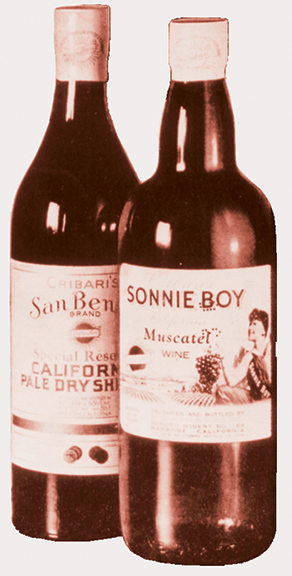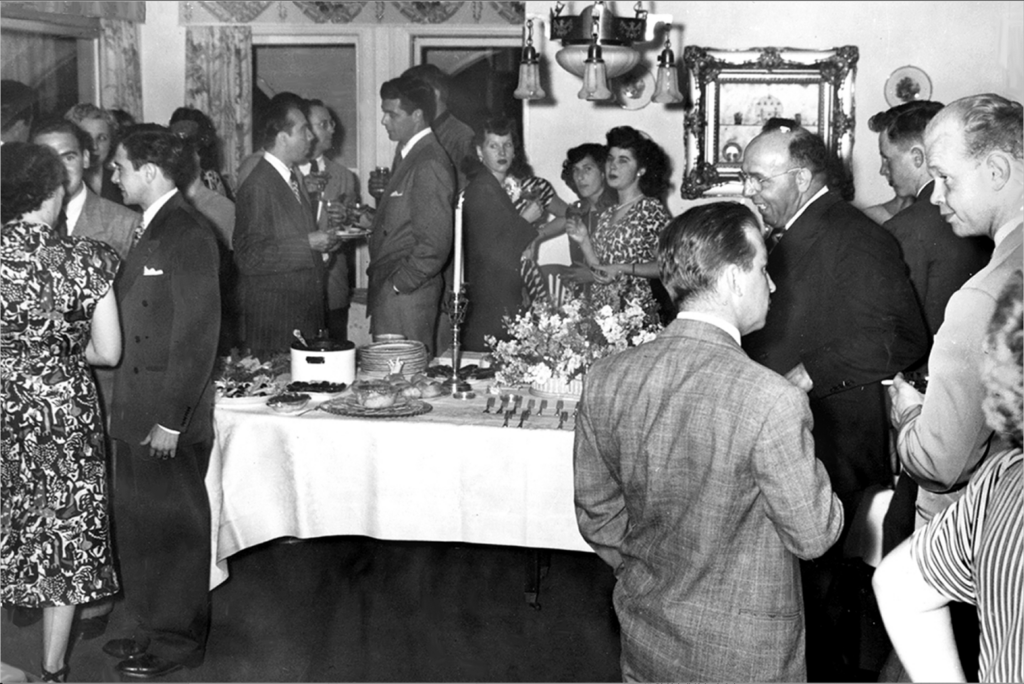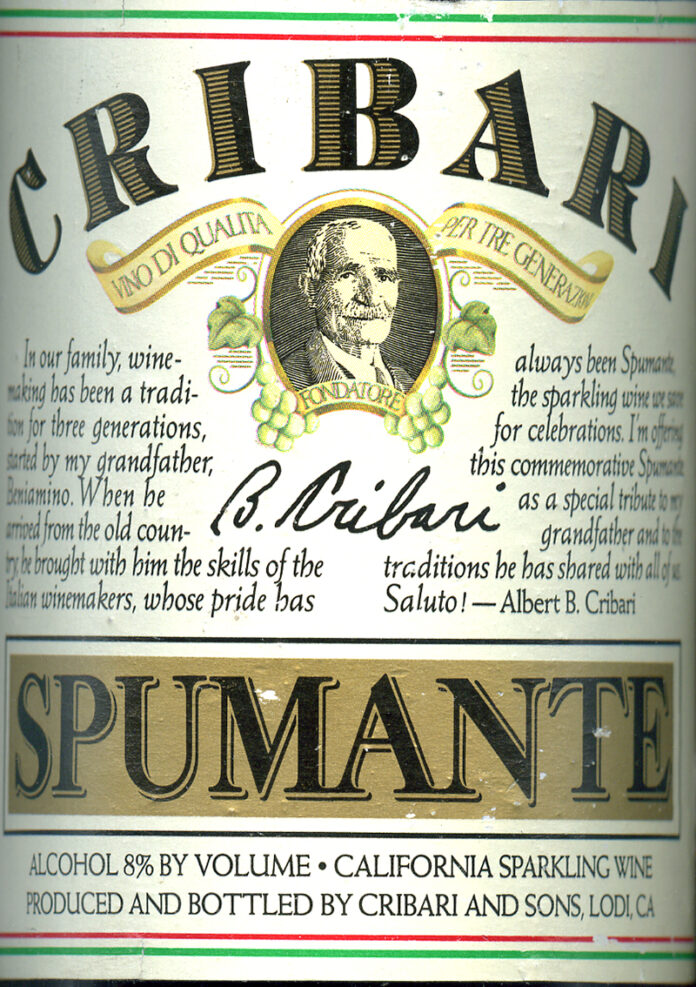In 1933, Italian born, Benjamino Cribari (1859-1942) would purchase the first portion of the Villa Lomas Azules. The family having dealt with the setback of Prohibition moved forward upon the repeal of the amendment with one and a quarter million gallons of wine aging in casks and ready to ship to a warehouse in a New York City skyscraper. Well positioned in the wine business, their California vineyards went back to producing traditional table wines as well as altar wines. The family, having set up the New York City warehouse, began marketing their premium wines to restaurants by setting up tables among the casks in their “Cellar in the Sky” with a seating capacity of 150 and inviting restaurateurs and other important people to enjoy their wines while dining on sumptuous Italian cuisine. Soon Cribari premium wines began appearing in New York restaurants, including the prestigious Waldorf-Astoria Hotel. The astute marketing strategy brought great success and enhanced the reputation of California wines on the East Coast. Cribari wines were shipped across the country in six family owned railroad tank cars emblazoned with the words “The House of Cribari.” They also owned a private railroad coach car for their own travel.
In 1940, the Cribari family would come to own the rest of the Evergreen property. The former Wehner mansion would be painted white and thereafter be known as the Cribari Mansion.
According to the1937 issue of Wines & Vines, …When Prohibition ended, the House of Cribari was in a position to supply the American people with excellent wines, and this enabled them to get a firm foothold throughout the country before other producers had a chance to enter the market.
Benjamin and his son, Fiore, took charge of the production in the west while the other sons, Angelo and Anthony, looked after the New York operations. The Cribari’s total annual grape crush in the late 1930s was estimated at 25,000 tons of grapes with a total capacity of 3.5 million gallons.
By the end of World War II, the family sold the New York wine operations and concentrated on its California ventures.
Wines & Vines lists a few of the more successful Cribari brands in 1937:
…In the West their (Cribari) sales…have shown a steady advance as a result of consumer acceptance of their Las Palmas, San Benito and Sonny Boy wines…
‘…And only when the consuming American public comes to know and appreciate California wines will the industry be placed on a firm and lasting basis.’ Along the highways throughout the western states are sprinkled large “Sonnie Boy” bottle signs showing the smiling face of Kenneth Cribari, son of Angelo, who posed for the appealing youngster, “Sonnie Boy,” featured on the labels that are familiar to all wine lovers.
The article goes on to mention a bit more about the Cribari Company’s marketing strategy: Their (Cribari) wines are sold in a much higher bracket than those of their competitors. Recently they raised their prices slightly, in the face of some competitors lowering theirs. The Cribaris do not see how anyone can put out quality California wine in any section of the country at prices that are manifestly below actual cost of production and marketing. Prices of 50¢ and 55¢ on the West Coast and 70¢ and 75¢ in the East are injurious to the business…The Cribari boys insist on one price to all, and that is something that is winning them much commendation.
The winemaking ability and savvy business sense of the Cribaris was proven when the Waldorf-Astoria Hotel in New York replaced one of its top imported labels with one of the Cribaris’ San Benito wines—the first domestic label ever stocked by the Waldorf. It was not only a victory for the Cribari family, but also a victory for other California wine producers.
The company, B. Cribari & Sons, acquired Rancho Villa Vista from the University of California and the California Lands Commission in 1944 and Fiore Cribari and family occupied Wehner’s former mansion, Lomas Azules. The other brothers lived nearby in San Jose. There are many stories of the big parties and large family gatherings held at the mansion during the years the Cribari family occupied it. Evidently, the Cribaris were people who played as hard as they worked.
According to Ebe Frasse, the last Cribari relative living in The Villages, family members attended entertainment events held at the San Jose Civic Auditorium and after the shows, invited big celebrities—including Frank Sinatra and other stars—to after parties held at the mansion.
In 1954 B. Cribari & Sons merged with Alta Vineyards of Fresno. Subsequently, the Cribari Company was sold to Guild Wineries, but Benjamin’s portrait still appeared on labels of various wines bearing the family name.
The Cribaris held Rancho Villa Vista until 1959, when 1,000 acres of the Cribari Evergreen hills property was sold to Alexander C. Ganiats and Earl R. Mason, after the State of California chose Santa Cruz as the site for its new U.C. campus. The campus was never developed and in 1966 Atkinson and Mackay, the developers of The Villages, purchased the land to establish a new type of adult residential development. The former Cribari property now constitutes the major portion of the approximately 1,200 acres that comprise the present-day Villages Golf & Country Club.
After the sale to the developer of the Villages, the Cribari family leased back a portion of the property, which was not under development, and continued to produce varietal table wines for leading West Coast wine labels (the huge Gallo company of Modesto, among them).
In 1975 Tony Cribari retired from the wine business and leased the remaining vineyard to the neighboring Mirassou Winery, which produced grapes on the remaining vineyard as The Villages expanded, eventually engulfing all of the vineyards.
The old Cribari winery barn was torn down in 1994 to make way for the construction of the new Villages Corporation Yard and office building.
Tony Cribari died, at age 88, in January of 1985 at his home in the Villages. Cribari family members who lived in The Villages included Bob Cribari of Hermosa, and Irma Sasso, Helen Carmichael and Tony Cribari of Cribari Village. Ebe Frasse is currently a resident of Valle Vista Village.
residents were also quite familiar with the name Ted Cribari, who presented financial seminars sponsored by a Villages investment club.
—Series compiled and written by S.R. Hinrichs
The Roots of Evergreen series will be published the third week of each month and posted in the Online Villager. The next article will feature local aviation pioneer John Joseph Montgomery.








